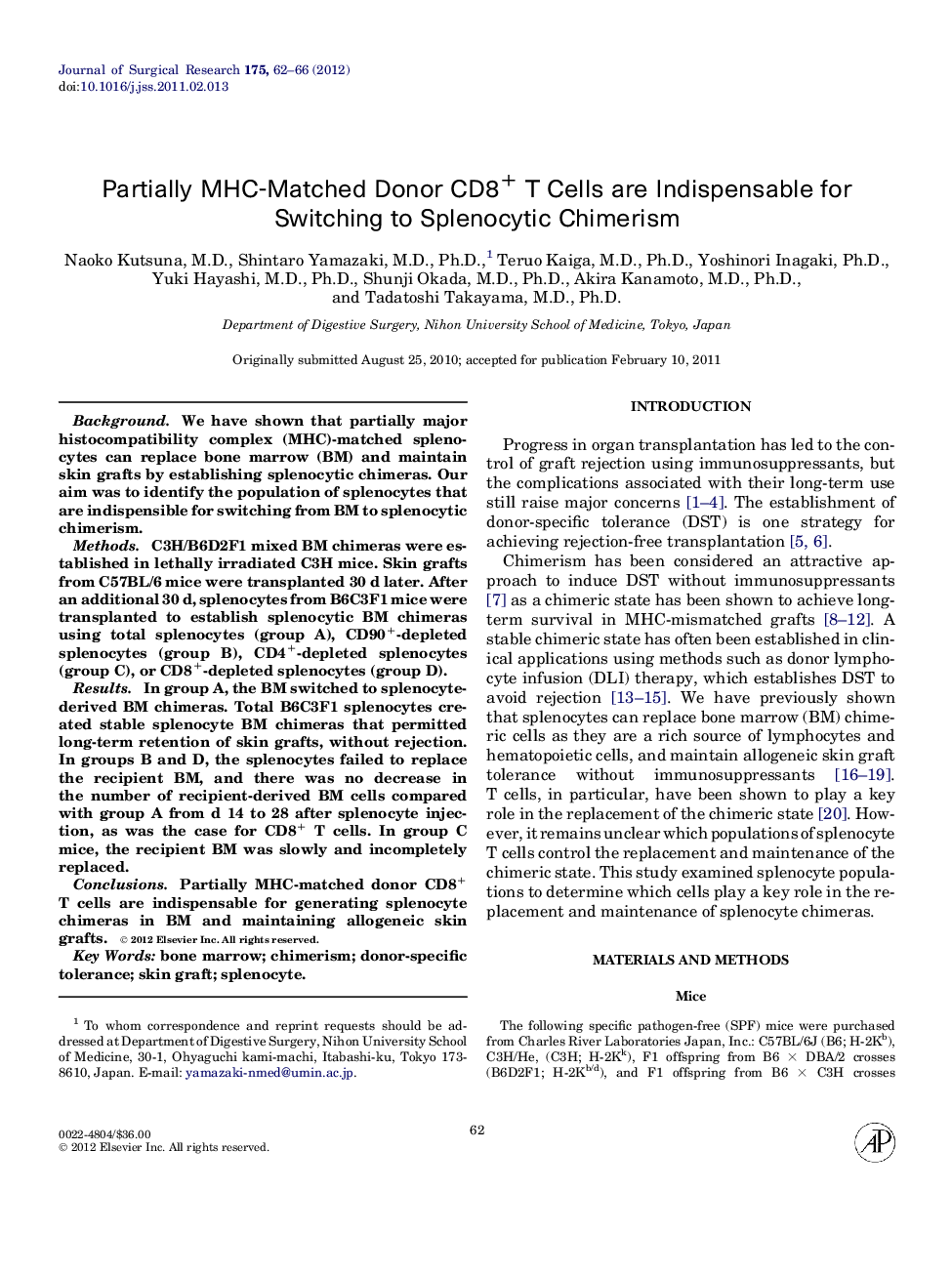| Article ID | Journal | Published Year | Pages | File Type |
|---|---|---|---|---|
| 4301324 | Journal of Surgical Research | 2012 | 5 Pages |
BackgroundWe have shown that partially major histocompatibility complex (MHC)-matched splenocytes can replace bone marrow (BM) and maintain skin grafts by establishing splenocytic chimeras. Our aim was to identify the population of splenocytes that are indispensible for switching from BM to splenocytic chimerism.MethodsC3H/B6D2F1 mixed BM chimeras were established in lethally irradiated C3H mice. Skin grafts from C57BL/6 mice were transplanted 30 d later. After an additional 30 d, splenocytes from B6C3F1 mice were transplanted to establish splenocytic BM chimeras using total splenocytes (group A), CD90+-depleted splenocytes (group B), CD4+-depleted splenocytes (group C), or CD8+-depleted splenocytes (group D).ResultsIn group A, the BM switched to splenocyte-derived BM chimeras. Total B6C3F1 splenocytes created stable splenocyte BM chimeras that permitted long-term retention of skin grafts, without rejection. In groups B and D, the splenocytes failed to replace the recipient BM, and there was no decrease in the number of recipient-derived BM cells compared with group A from d 14 to 28 after splenocyte injection, as was the case for CD8+ T cells. In group C mice, the recipient BM was slowly and incompletely replaced.ConclusionsPartially MHC-matched donor CD8+ T cells are indispensable for generating splenocyte chimeras in BM and maintaining allogeneic skin grafts.
